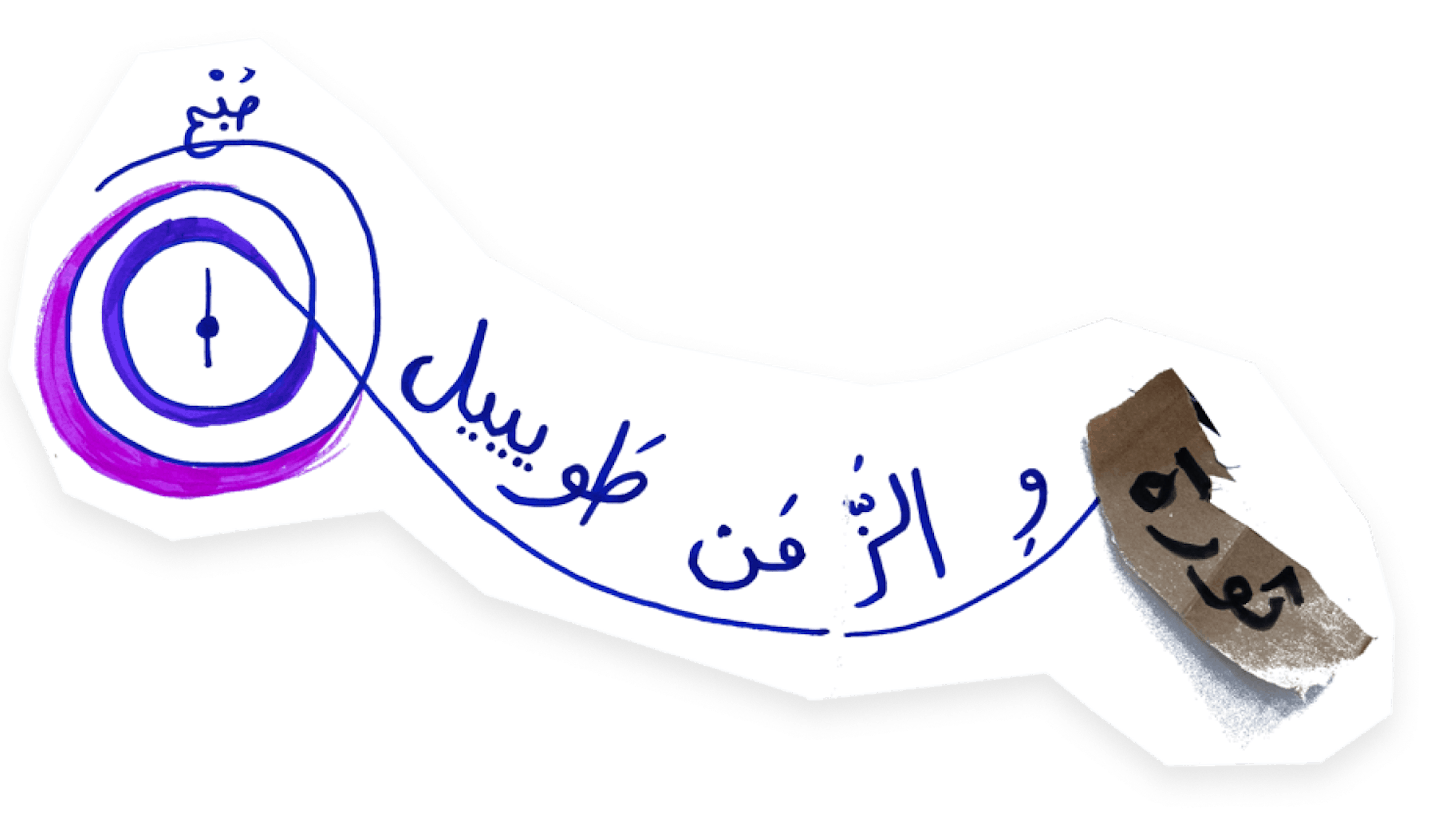Performative Mapping of the 2019 Uprisings
This Performative Mapping of the 2019 Uprising is an outcome of the second workshop led by Maria Bassil and Marc El Samrani. In this workshop, students were asked to create a common performative map. This map focuses on space and the 2019 protests. Bassil and El Samrani worked with the students to share their personal urban experiences of the protest and its impact on their spatial understanding of the city. The common map embodied these experiences that, in turn, created a new way to engage and map the spatial traces and legacies of the 2019 protests.
Workshop Two Leads: Maria Bassil and Marc el Samrani
Student Participants:
Alexandra Harb
Christina R Karam
Christina Karam
Georges Hajj
Marcelle El Achkar
Marianne Mouzaya
Sharbel Karam
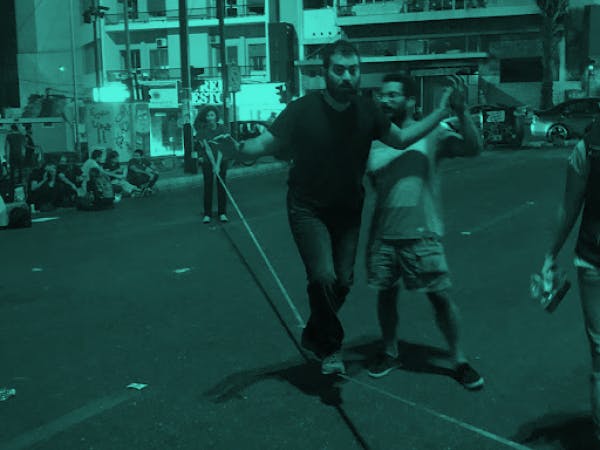
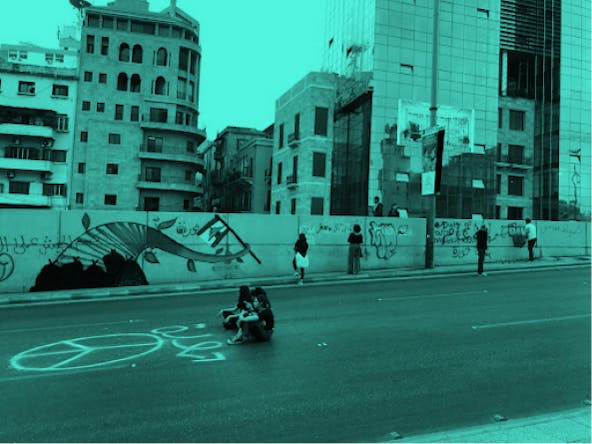
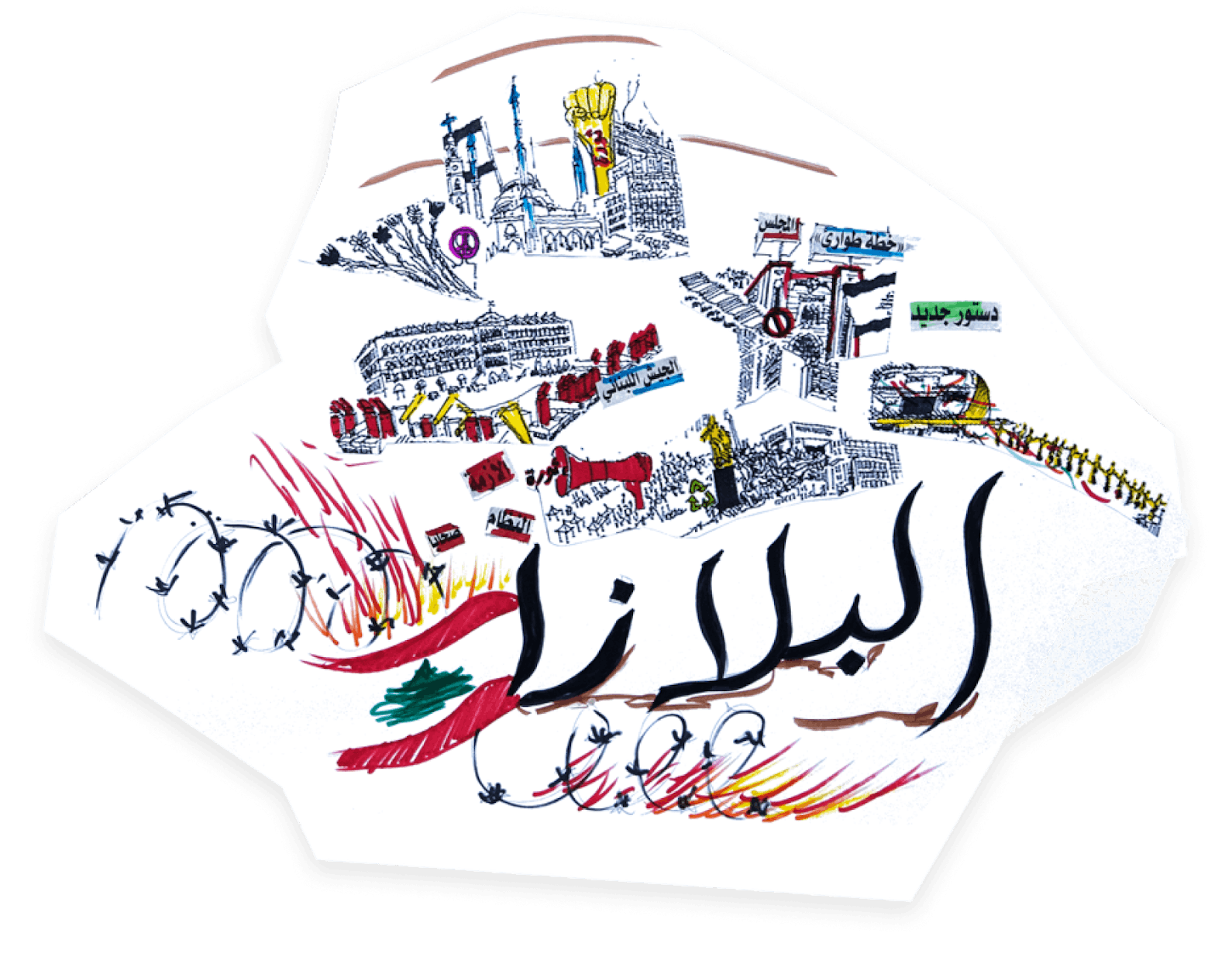
The Plaza
The plaza (al-blaza) refers sardonically not to a particular place in Lebanon but to the fact that the county’s urban centers have few public plazas for people to gather. In the course of the protests many spaces, such as highways and privatized areas of the city, were transformed (if only fleetingly) into public urban spaces. These transformations were achieved through both physical and representational reappropriation of urban space. Protesters placed couches, BBQs and carpets in the middle of highways to both block the highway and claim the space through holding civic debates and meals. These spaces also became important places of artistic performance that included dance, graffiti and play.
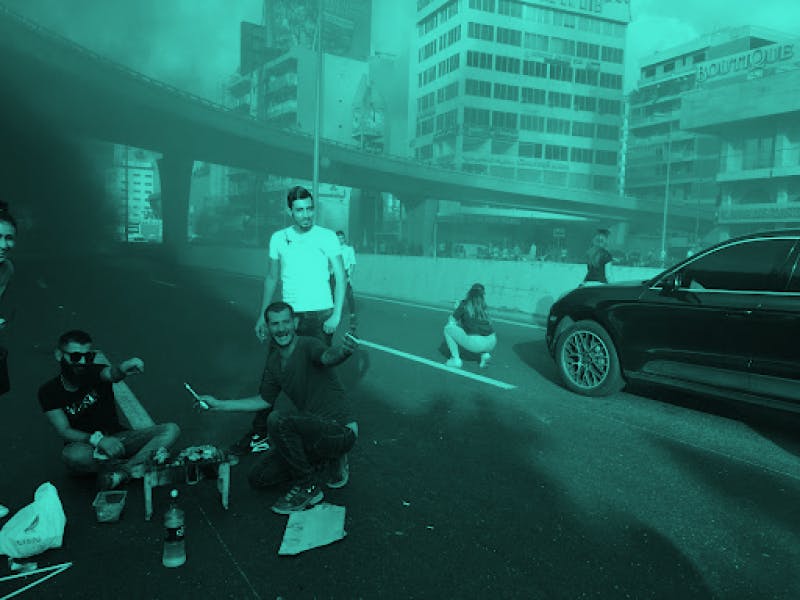
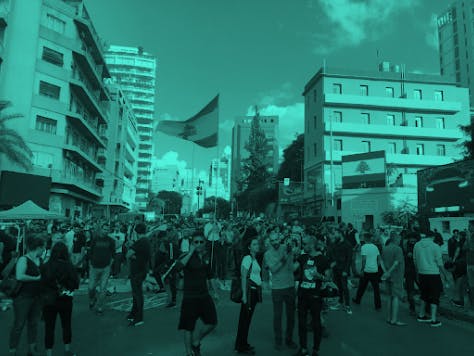
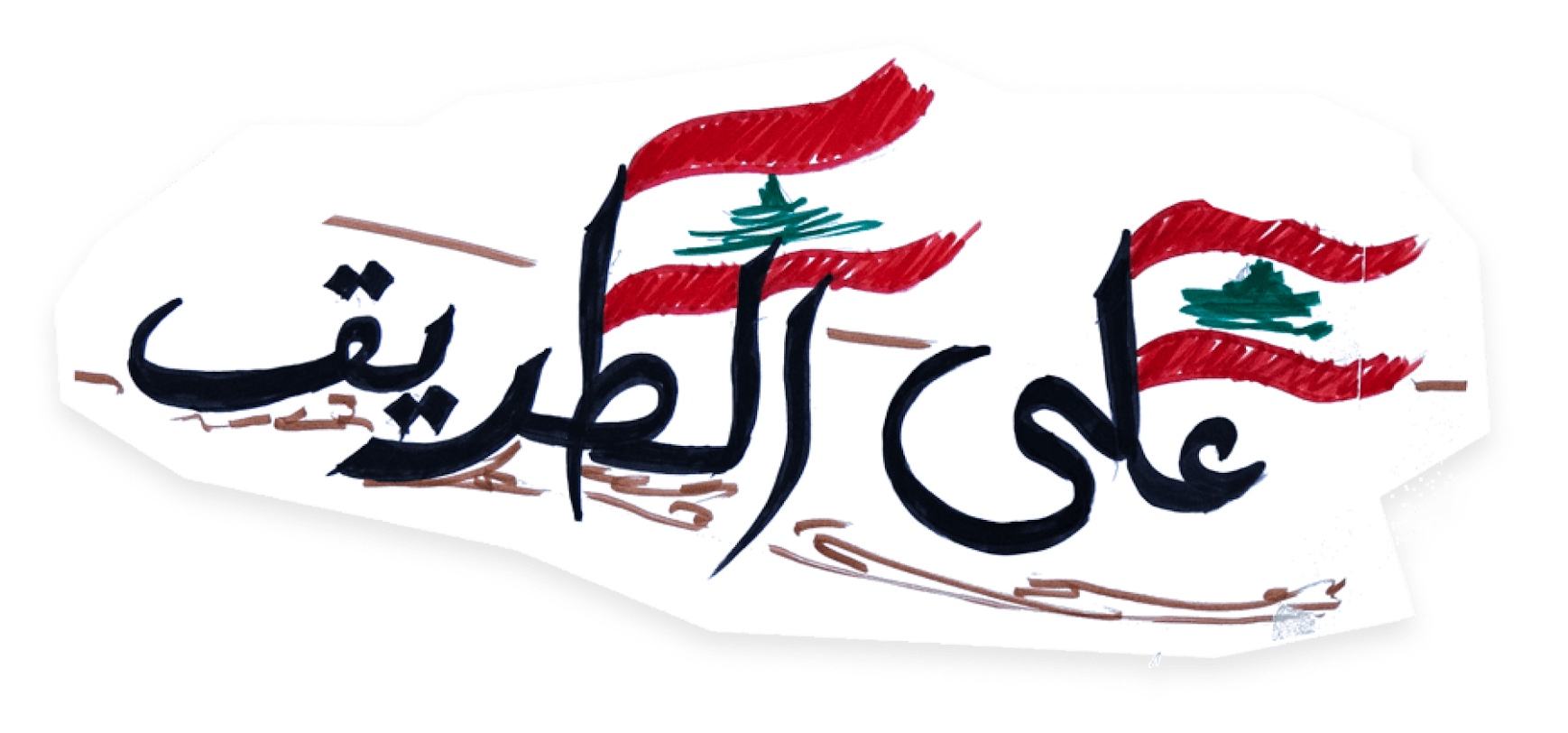
On the road
“On the road” (3ala al-tari2) points to the importance of the highways in the 2019 protest. The participants of the USEK-LSE 2022 workshop detailed how important the highways were in the course of the revolt. Protesters shut down roads preventing the economy from operating and stopping people going to work that led to many more people joining protests in public squares throughout the country and also transforming highways into public places of social contestation.
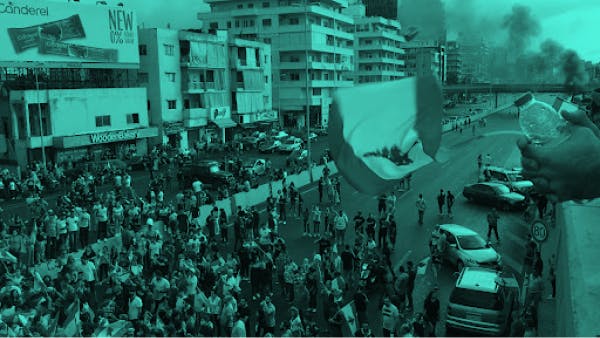
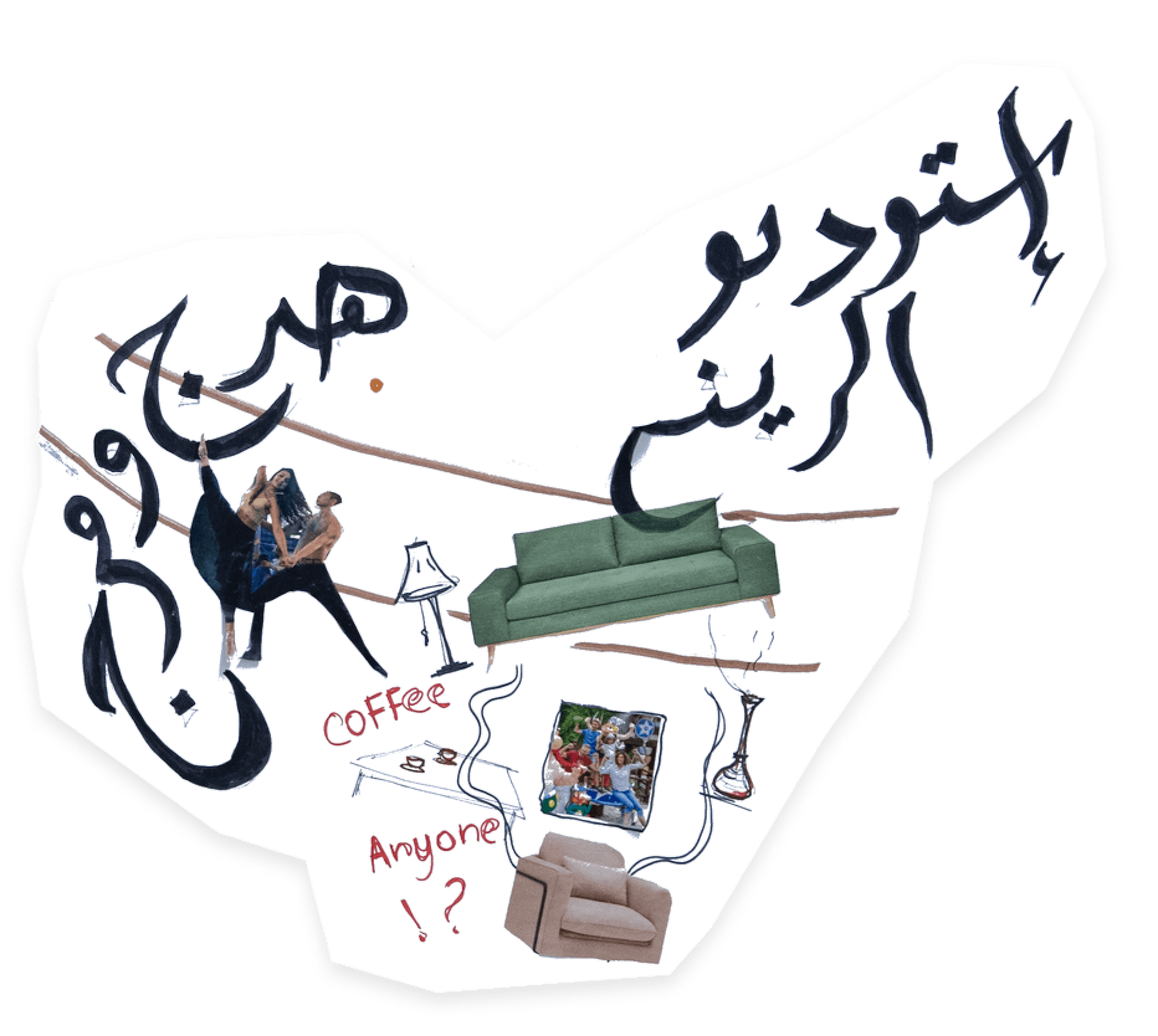
The Ring: The highway as an apartment for the people
The Ring bridge - part of Beirut’s major ring road - quickly became a critical space in the uprisings. This urban space, usually dominated by cars, was transformed by demonstrators who reimagined the area as an outdoor apartment, adding their sofas, fridges, and chairs. An online ad was even posted on the Airbnb website offering to book a night in what was commonly known as the apartment of the people. Rather than merely a place to rapidly pass by in the car, the Ring was reclaimed by protesters into a public forum.

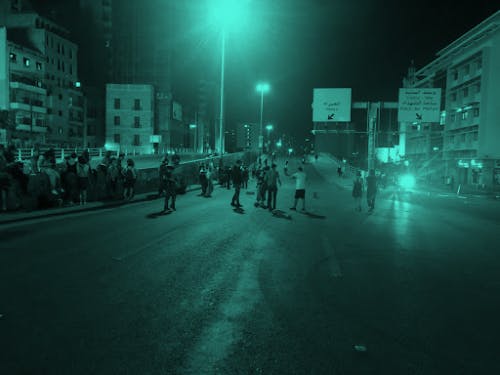
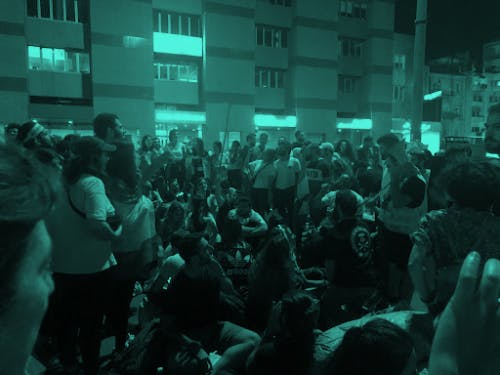
The Fist
A clenched fist with thawra (revolution) written on the forearm became a defining image of the 2019 uprising. A six-meter-high cutout of the fist was placed by protesters in the heart of Beirut in Martyrs' Square. The fist has been a site of constant struggle with it being burnt and replaced several times. Other cutouts of the fist proliferated throughout Lebanon placed along highways and other public places. The symbol of the first has a long political history with a wide geographical reach. It is strongly associated with socialist movements and anti-facist and anti-racist resistance. In recent history, the raised fist is a notable symbol used in the Black Lives Matter movement and was also present in the course of the Arab uprisings and Occupy Wall Street.
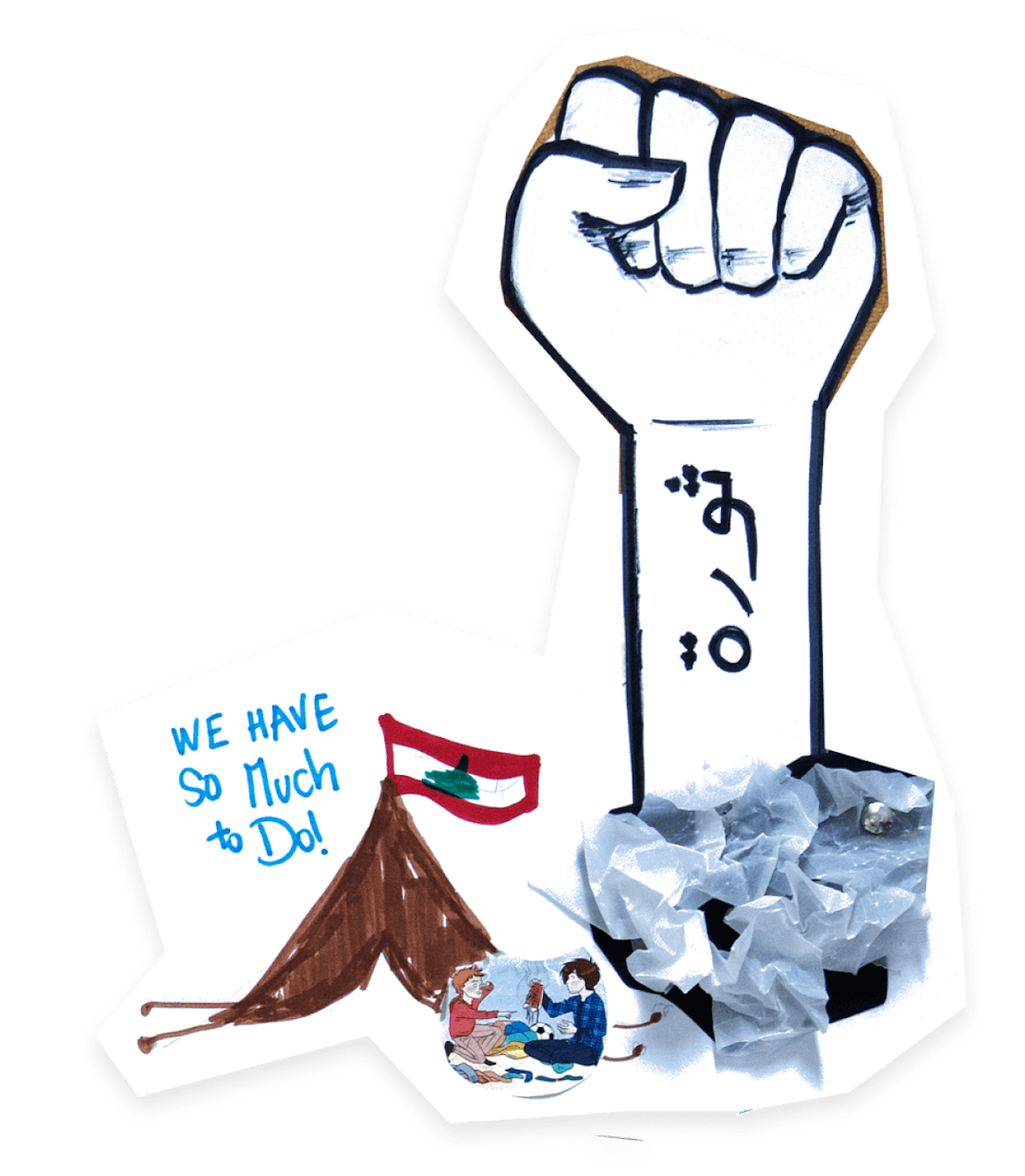
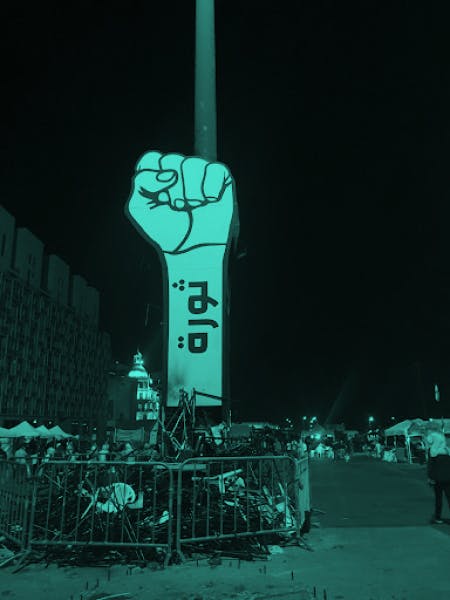
The Common Feast
Food was an important element of the protests. Makeshift kitchens and BBQs were constructed and protesters distributed food. Also, as cited in the poster, certain food chains became prominent in the revolt, like Dunkin Donuts, Bachir and Sea Sweet, as places to gather and to rest. These fast food chains also became known for distributing food to protesters. In the sound recording one protester describes their experience of the common feast.
The Slogans
From the popular refrain of the 2011 Arab uprisings to ingenious street slogans denouncing a "corrupt" ruling elite, the chants of Lebanon's protests have been a mix of defiance and humour. Here the students selected three slogans that resonated with them during the protests.
- You gangsters stole the public’s money
فاسدين زعران سرقتوا المال العام - Revolution
ثورة - Revolution against sectarianism
ع الطائفية ثورة
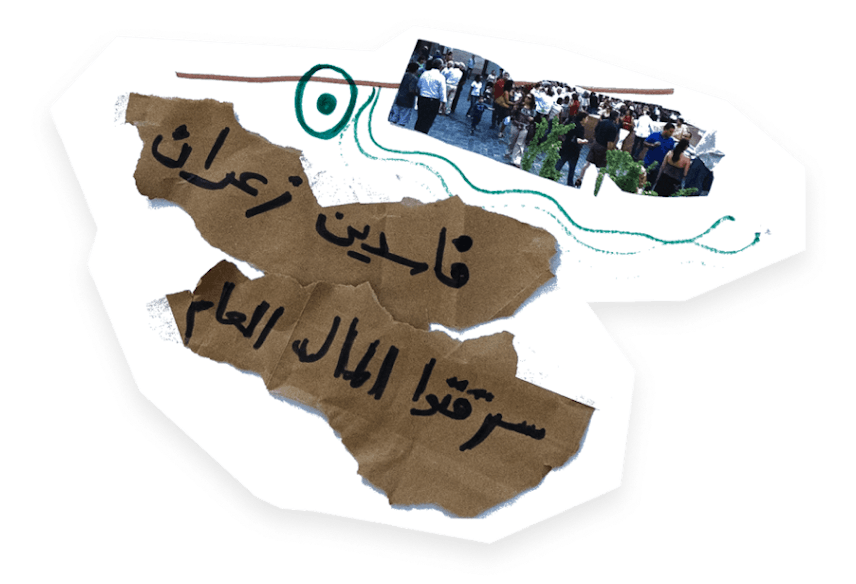
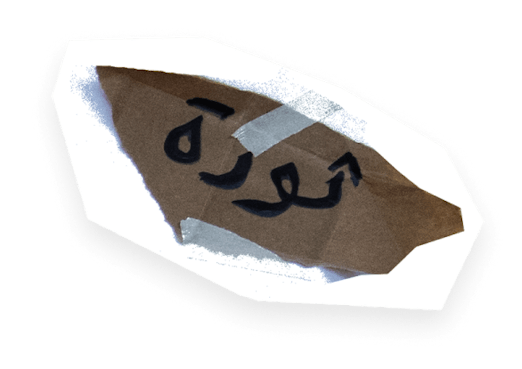
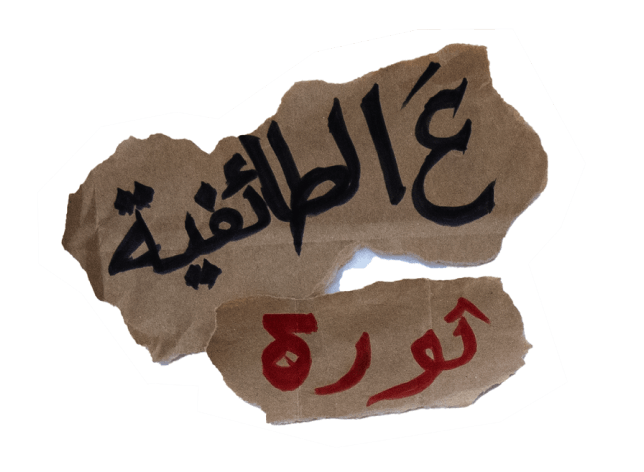
Banks
A central vector of the October 2019 protests was the collapse of the banking sector. In May 2019, banks started to impose restrictions on USD withdrawals and this was tightened further in November. The collapse of the banking sector and economy more broadly continued into 2020 resulting in the county’s first default on its public debt. People continue to be unable to get ahold of their own deposits in Lebanese banks to this day.
See more about the collapse of the Lebanese economy and banking system:
Joan Chaker, The Lebanese Economic Crisis 101 (Part 1), March 2020,
Joan Chaker, The Lebanese Economic Crisis 101 (Part 2), April 2020,
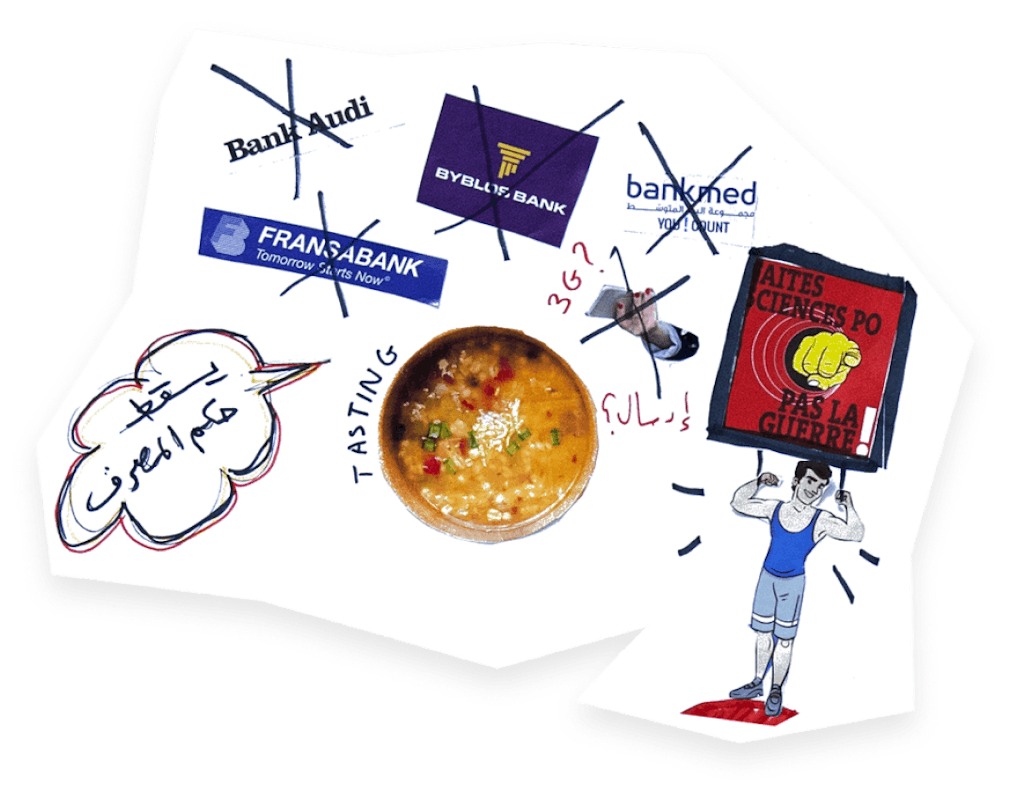
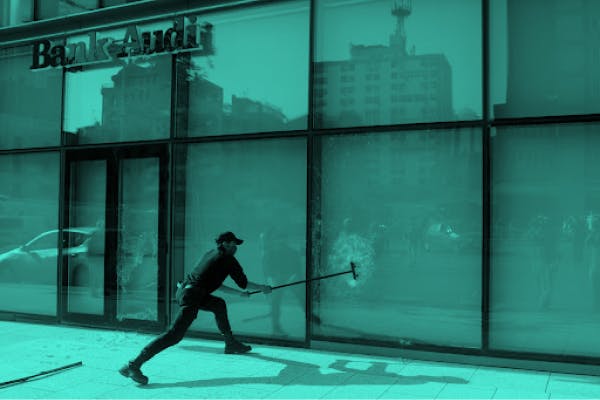
The role of New and Traditional Media
Lebanon has a number of prominent mainstream newspapers and TV stations. While some of these traditional media outlets supported the protests, others did not. But the general distrust by the Lebanese public toward established media helped in the prominence of alternative media and digital platforms in the uprising. This included Megaphone, Daleel Thawra, and 17 Teshreen. In addition, there were countless Facebook pages, Instagram and Twitter accounts, and WhatsApp groups, created to organize, document and inform about the uprisings. The physical and virtual spaces of the October protest were deeply entwined. For a full overview of the media see:
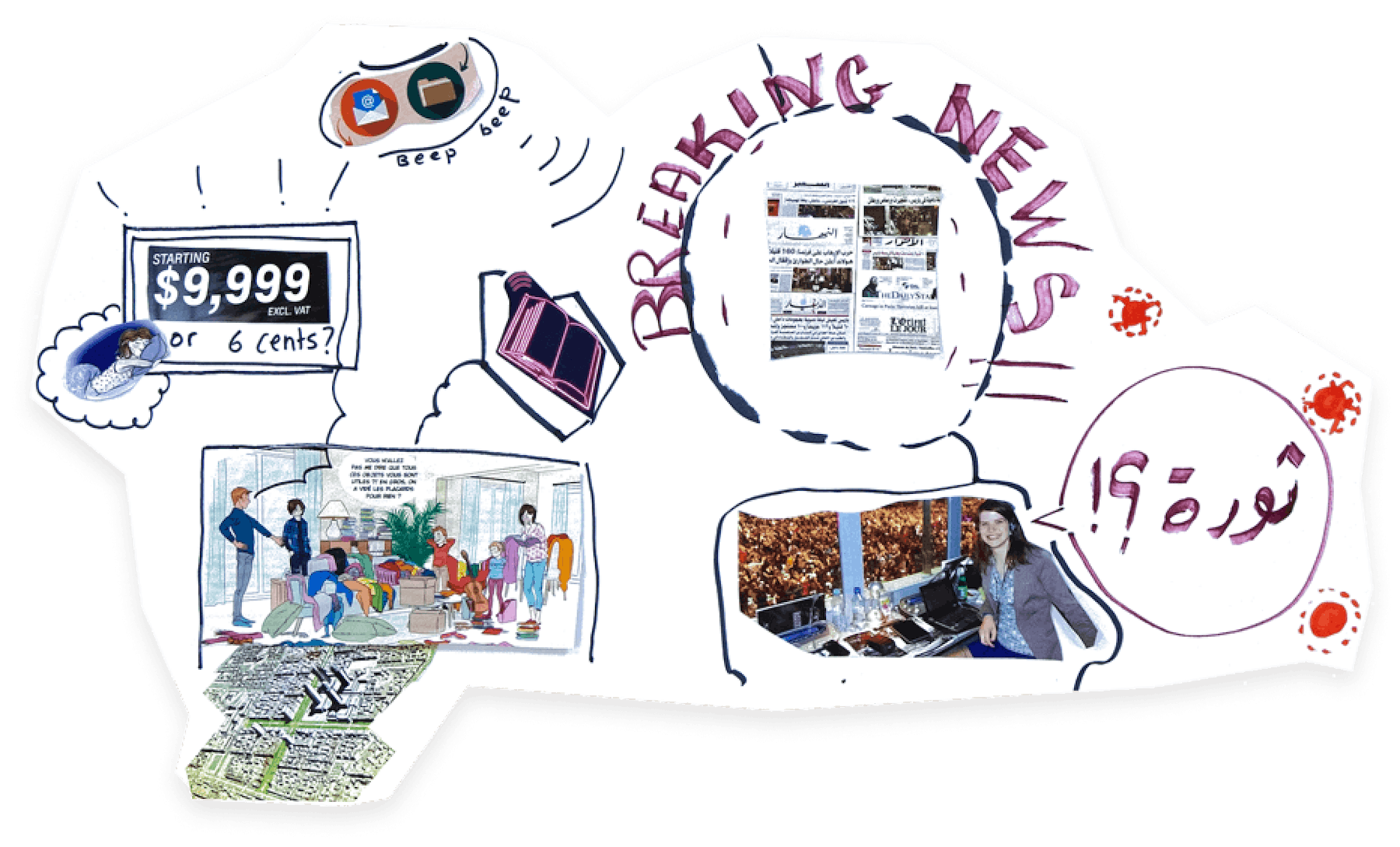
Harj w marej هرج و مرج and karr w farr كرّ و فرّ (Uproar)
Any time there was confrontation between protesters and counter-revolutionaries then the terms harj wa marej (Image left) or Karr wa Farr (Image right) were used by the media. These terms translate to "uproar" or "raucous". Journalists reporting in the midst of the protests often used these terms to refer to what they saw as the chaotic scenes of the protests.
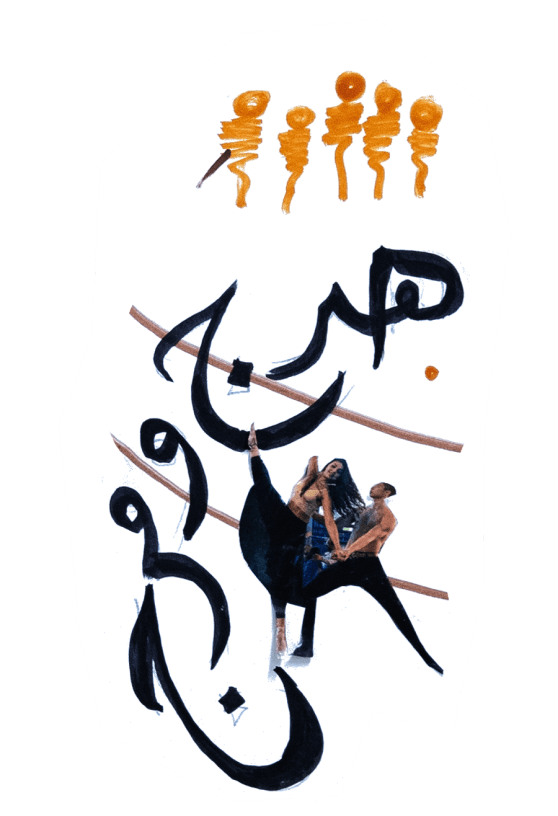
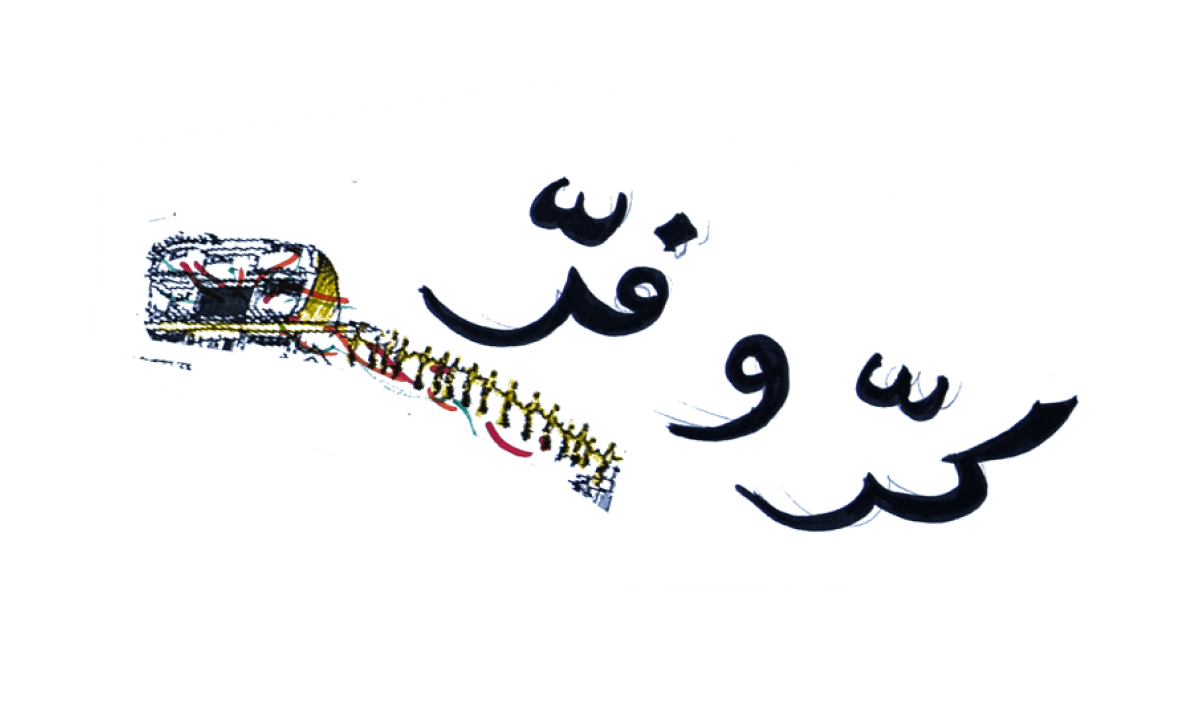
The "Soup" Metaphor
The students included soup in various places on the poster as a symbol of the uprisings. As one of the students explains in the below audio clip the soup, in its gathering and blending of different ingredients all coming together as one, represents the power of unity in the uprising.
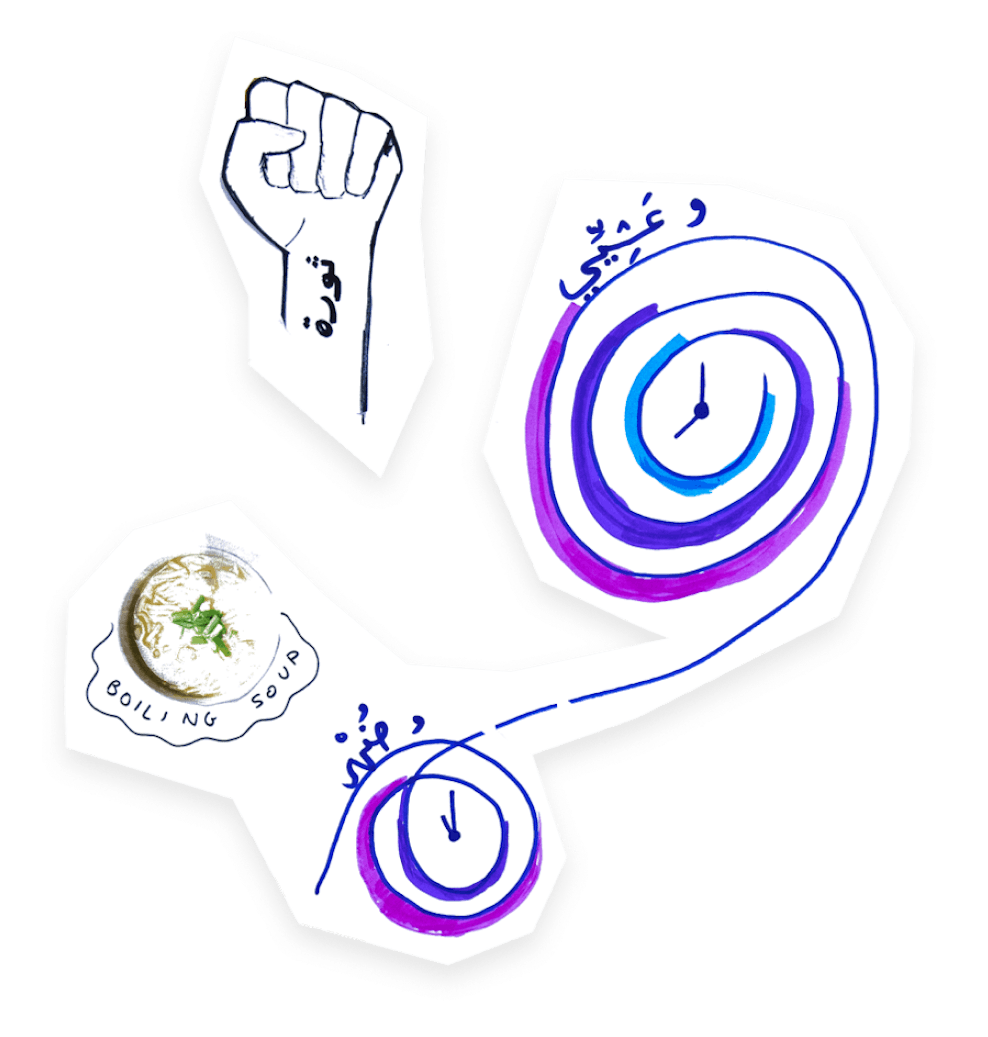
The Human Chain
The road with colored pieces running through the poster represents the human chain that formed as part of October 2019. Nearly 170,000 people formed a chain that ran from the northern region of Akkar to the southern areas of Sidon, spanning nearly 105 miles.
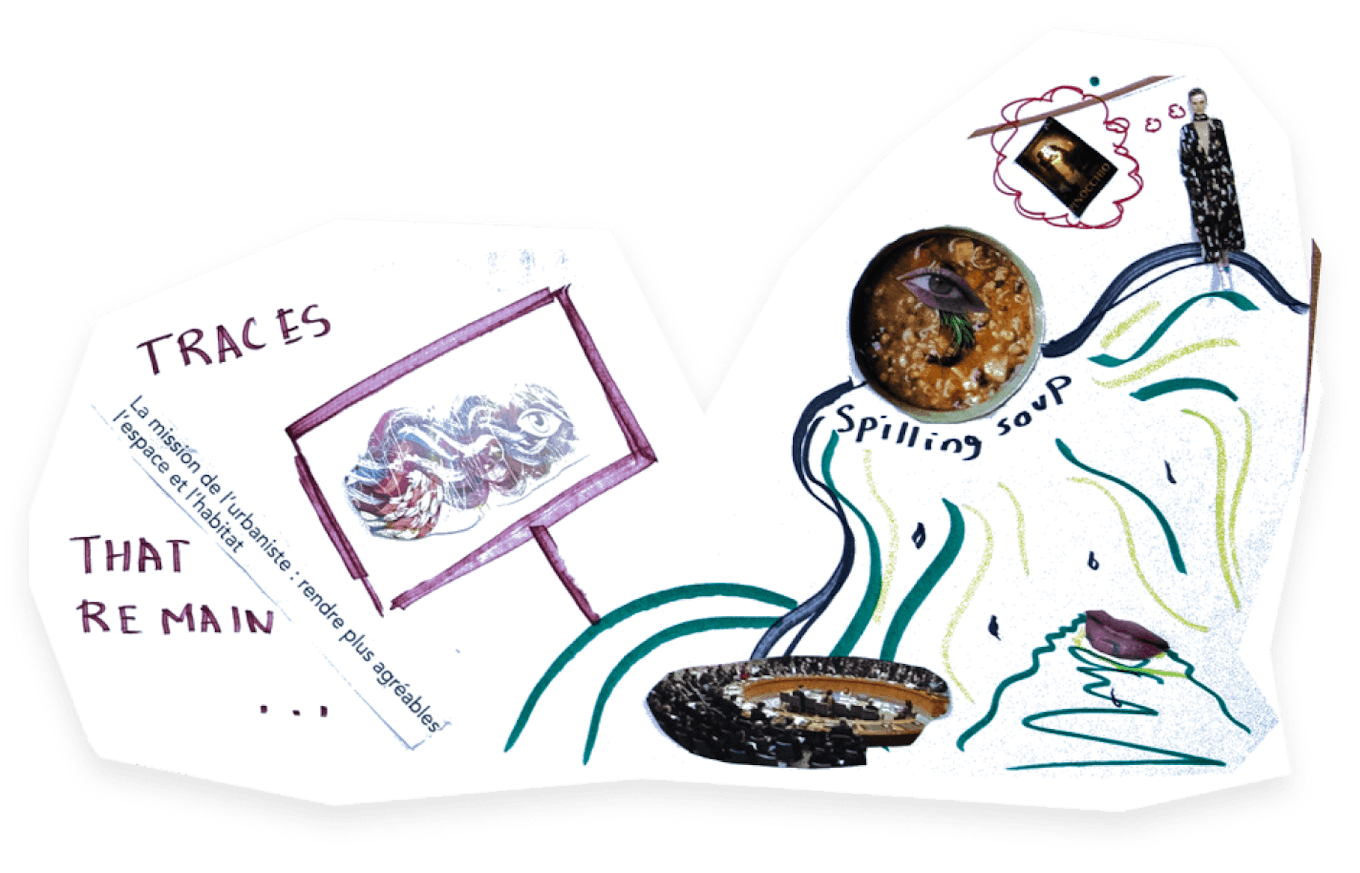
Time
The circles here represent time in the protest. In Arabic it is written “Revolution and time is loooong”. The colors in the circles show the different generations that participated in the protests at different times. The light blue is for children and teens, the purple for the adults and the pink for the elderly.
